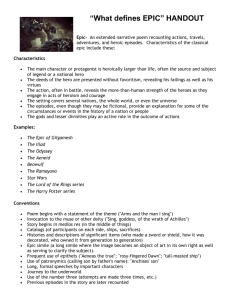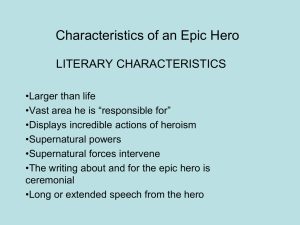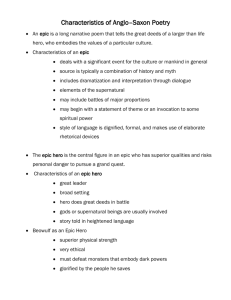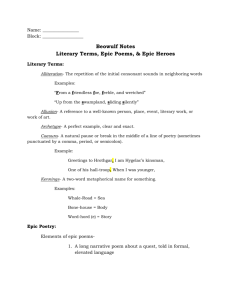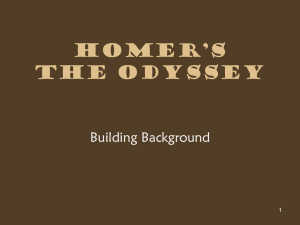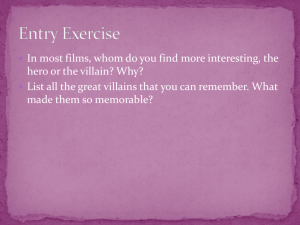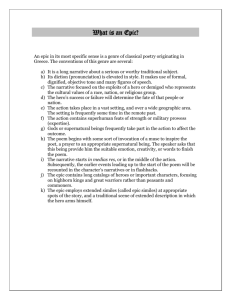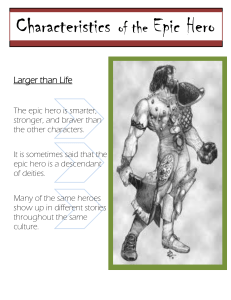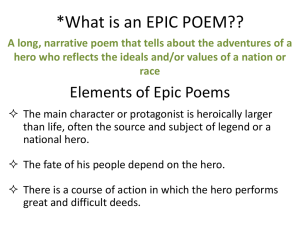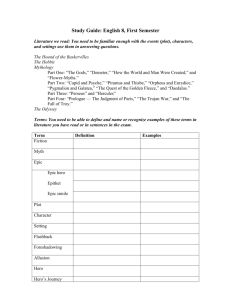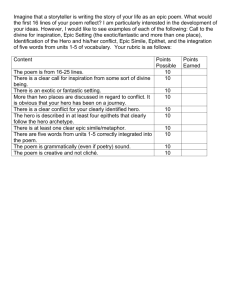Epic
advertisement
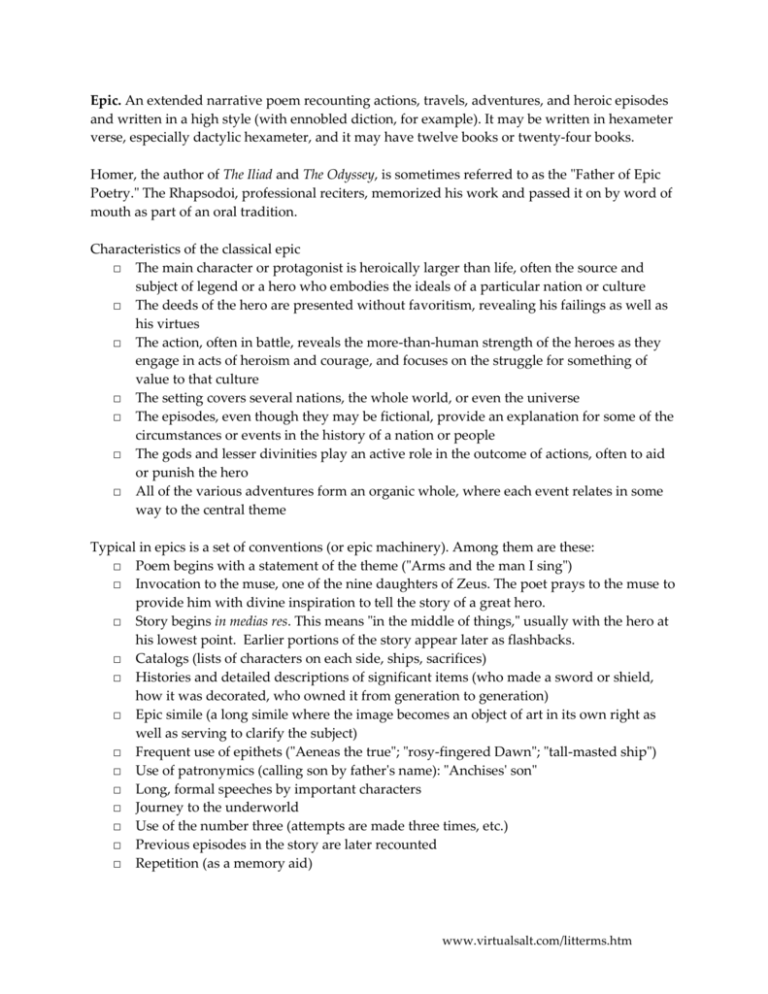
Epic. An extended narrative poem recounting actions, travels, adventures, and heroic episodes and written in a high style (with ennobled diction, for example). It may be written in hexameter verse, especially dactylic hexameter, and it may have twelve books or twenty-four books. Homer, the author of The Iliad and The Odyssey, is sometimes referred to as the "Father of Epic Poetry." The Rhapsodoi, professional reciters, memorized his work and passed it on by word of mouth as part of an oral tradition. Characteristics of the classical epic □ The main character or protagonist is heroically larger than life, often the source and subject of legend or a hero who embodies the ideals of a particular nation or culture □ The deeds of the hero are presented without favoritism, revealing his failings as well as his virtues □ The action, often in battle, reveals the more-than-human strength of the heroes as they engage in acts of heroism and courage, and focuses on the struggle for something of value to that culture □ The setting covers several nations, the whole world, or even the universe □ The episodes, even though they may be fictional, provide an explanation for some of the circumstances or events in the history of a nation or people □ The gods and lesser divinities play an active role in the outcome of actions, often to aid or punish the hero □ All of the various adventures form an organic whole, where each event relates in some way to the central theme Typical in epics is a set of conventions (or epic machinery). Among them are these: □ Poem begins with a statement of the theme ("Arms and the man I sing") □ Invocation to the muse, one of the nine daughters of Zeus. The poet prays to the muse to provide him with divine inspiration to tell the story of a great hero. □ Story begins in medias res. This means "in the middle of things," usually with the hero at his lowest point. Earlier portions of the story appear later as flashbacks. □ Catalogs (lists of characters on each side, ships, sacrifices) □ Histories and detailed descriptions of significant items (who made a sword or shield, how it was decorated, who owned it from generation to generation) □ Epic simile (a long simile where the image becomes an object of art in its own right as well as serving to clarify the subject) □ Frequent use of epithets ("Aeneas the true"; "rosy-fingered Dawn"; "tall-masted ship") □ Use of patronymics (calling son by father's name): "Anchises' son" □ Long, formal speeches by important characters □ Journey to the underworld □ Use of the number three (attempts are made three times, etc.) □ Previous episodes in the story are later recounted □ Repetition (as a memory aid) www.virtualsalt.com/litterms.htm
